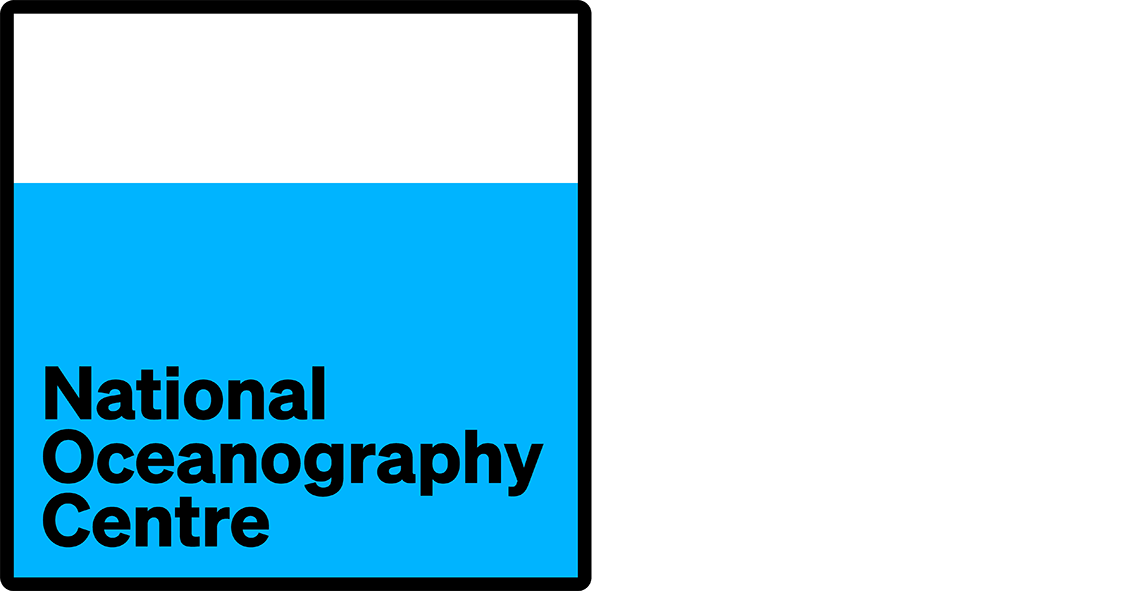- Resources
- Inventories
- Cruise inventory
- Report
- 18611
RRS James Cook JC263 (JC263A)
Cruise summary report
| Cruise Info. | |
| Ship name (ship code) | RRS James Cook (740H) |
| Cruise identifier | JC263 (JC263A) |
| Cruise period | 2024-05-20 — 2024-06-12 |
| Status | Completed |
| Port of departure | Southampton, United Kingdom |
| Port of return | Southampton, United Kingdom |
| Purpose | Research |
| Objectives | The aim of JC263 was to study multidecadal change in the NE Atlantic by continuing long-term observations at the Porcupine Abyssal Plain Sustained Observatory (PAP-SO) and Whittard Canyon. Both sites are part of the Natural Environment Research Council's "AtlantiS" National Capability prioject that is managed by the National Oceanography Centre (NOC) - https://noc.ac.uk/projects/atlantic-climate-environment-strategic-science.
Research at PAP-SO aims to use time-series data on different temporal scales (hours to years) to observe biogeochemical and ecological change at the site. Scientists have been visiting PAP-SO since 1985 to make observations, and the nature of the science has evloved over that time period. Specific objectives of JC263 were: Whittard Canyon (Irish EEZ): - Recovery of Whittard Canyon mooring (sediment trap, ADCPs and CTDs) - CTD for testing release for new mooring - CTD study of turbidity in eastern branch of Whittard Canyon - Deployment of replacement sediment trap mooring in the Whittard Canyon PAP-SO - Replace a Met Office surface ocean ODAS buoy equipped with NOC biogeochemistry sensors - Recover and replace sediment trap mooring - Deploy and recover a short-term time-lapse camera for a study lasting the cruise duration (13 days) - Deploy a long-term time-lapse camera for a year-long study - Deploy and recover baited trap landers (amphipod trap) - CTD water column profiles and sampling - Sediment coring using Megacore - Photographic survey of the seabed - Scientific trawling for time series and specimens for student projects - Deploy a biogeochemistry Argo float - Carry out underway sensing and sampling of the surface water - Zooplankton nets JC263 departed Southampton Southampton 20th May 2024, making a short first stop to do a shallow test CTD on the way to Whittard Canyon. After arrival at Whittard on 22nd May five CTD casts were carried out and the mooring recovered and replaced before leaving late on 23rd May. Arrival at PAP-SO was delayed until 25th May because of poor weather. On arrival a deep CTD cast was followed by sediment sampling overnight. A dawn CTD time series started for the duration of the cruise on the 7th May, CTDs, coring and mooring work continued until the 10th May when the focus changed to deployment of the Met Office surface ocean ODAS buoy and overnight seafloor imaging surveys using the HyBIS platform. The ODAS buoy was successfully deployed 31st May and confirmed to be transmitting near real-time data. In the latter part of the cruise attention switched to scientific trawling. Two successful OTSB14 trawls were completed providing the latest data for the PAP-SO time series, PhD students and other projects. A deep-sea time-lapse camera lander was deployed for recovery in 2025 before completing final CTD casts and departing the PAP-SO on 9th June. The transit included a short stop at Falmouth Bay for ship's exercise, arriving at NOC on 12th June. |
| Chief scientist | Andrew R Gates (National Oceanography Centre, Southampton), Anita Flohr (National Oceanography Centre, Southampton) |
| Project | Porcupine Abyssal Plain deep ocean observatory |
| Coordinating body | National Oceanography Centre (NOC) |
| Cruise report | |
| Ocean/sea areas | |
| General | Celtic Sea |
| Specific | Porcupine Abyssal Plain Sustained Observatory (PAP-SO), Whittard Canyon |
| Track charts | |
| Measurements | |
| Physical oceanography | |
| CTD stations | Quantity: number of stations = 28 Description: CTD profiles at PAP site. Includes release tests for mooring deployments, Argo float validation, mooring sensor validation and water bottle samples. Sensor measurements for of pressure, salinity, temperature, oxygen, chlorophyll, plus water samples from some CTDs for chlorophyll, nutrients, oxygen, salinity, DIC & TA. |
| CTD stations | Quantity: number of stations = 1 Description: CTD profile and water samples near at 48° 59.2N, 007° 47.5W to act as a test for the rest of the cruise. |
| CTD stations | Quantity: number of stations = 5 Description: CTD profiles and water samples at Whittard Canyon in Irish EEZ. Release tests, WC mooring sensor validation and turbidity study. |
| Subsurface temperature and salinity measurements | Quantity: activity duration in days = 23 Description: Underway surace water intake measurements for the duration of the cruise. |
| Chemical oceanography | |
| Carbon dioxide | Quantity: activity duration in days = 23 Description: Underway surace water intake measurements for the duration of the cruise. |
| Biology and fisheries | |
| Zooplankton | Quantity: number of stations = 5 Description: WP2, plankton nets for zooplankton at PAP, midnight and midday to 200 m |
| Zoobenthos | Quantity: number of stations = 14 Description: Macrobenthos samples collected by Megacorer at PAP |
| Zoobenthos | Quantity: number of stations = 6 Description: Imaging survey of the seafloor at PAP |
| Zoobenthos | Quantity: number of hauls = 2 Description: Demersal trawls for collection of megabenthos at PAP |
| Moorings, landers, buoys | |
| Physical oceanography | |
| Current meters | 49° 0' 16" N 16° 22' 37" W — 26/05/2024 - Deployment of PAP-SO sediment trap mooring. Station JC247-021. Includes 3 x sediment trap, 1 x current meters and 2 x CTD. |
| Current meters | 48° 59' 10" N 16° 19' 20" W — 02/06/2024 - Recovery of PAP-SO sediment trap mooring deployed on 10/05/2023. Mooring comprises 3 x sediment trap, 1 x current meters and 2 x CTD. |
| Current profiler (eg ADCP) | 48° 37' 29" N 10° 0' 7" W — 23/05/2024 Deployed a mooring with an Anderson sediment trap, 2 ADCPs and in situ CTD at the Whittard Canyon in Irish EEZ. Mooring had no surface expression. |
| Current profiler (eg ADCP) | 48° 37' 31" N 10° 0' 10" W — 22/05/2024 Recovered a mooring with an Anderson sediment trap, 2 ADCPs and in situ CTD at the Whittard Canyon in Irish EEZ. Mooring had no surface expression. Deployed as station JC247-003, 07/05/2023 |
| Other physical oceanographic measurements | 49° 0' 0" N 16° 30' 0" W — 28/05/2024 – deployment of a biogeochemistry Argo float. |
| Chemical oceanography | |
| Oxygen | 49° 0' 16" N 16° 22' 37" W — 26/05/2024 - Deployment of PAP-SO sediment trap mooring. Station JC247-021. Includes 3 x sediment trap, 1 x current meters and 2 x CTD. |
| Oxygen | 48° 58' 35" N 16° 21' 6" W — 31/05/2024 Deployed ODAS buoy mooring "PAP-1". Mooring comprises surface Mobilis meteorological buoy and 30m biogeochemistry sensor frame. Biogeochemistry sensors include CO2 in air and water, temperature, salinty, oxygen and chlorophyll flouroescence and a holographic imaging system. |
| Oxygen | 49° 0' 0" N 16° 30' 0" W — 28/05/2024 – deployment of a biogeochemistry Argo float. |
| Carbon dioxide | 48° 58' 35" N 16° 21' 6" W — 31/05/2024 Deployed ODAS buoy mooring "PAP-1". Mooring comprises surface Mobilis meteorological buoy and 30m biogeochemistry sensor frame. Biogeochemistry sensors include CO2 in air and water, temperature, salinty, oxygen and chlorophyll flouroescence and a holographic imaging system. |
| Biology and fisheries | |
| Phytoplankton pigs (eg chlorophyll, fluorescence) | 48° 58' 35" N 16° 21' 6" W — 31/05/2024 Deployed ODAS buoy mooring "PAP-1". Mooring comprises surface Mobilis meteorological buoy and 30m biogeochemistry sensor frame. Biogeochemistry sensors include CO2 in air and water, temperature, salinty, oxygen and chlorophyll flouroescence and a holographic imaging system. |
| Phytoplankton pigs (eg chlorophyll, fluorescence) | 49° 0' 0" N 16° 30' 0" W — 28/05/2024 – deployment of a biogeochemistry Argo float. |
| Sediment traps | 48° 37' 31" N 10° 0' 10" W — 22/05/2024 Recovered a mooring with an Anderson sediment trap, 2 ADCPs and in situ CTD at the Whittard Canyon in Irish EEZ. Mooring had no surface expression. Deployed as station JC247-003, 07/05/2023 |
| Sediment traps | 49° 0' 16" N 16° 22' 37" W — 26/05/2024 - Deployment of PAP-SO sediment trap mooring. Station JC247-021. Includes 3 x sediment trap, 1 x current meters and 2 x CTD. |
| Sediment traps | 48° 59' 10" N 16° 19' 20" W — 02/06/2024 - Recovery of PAP-SO sediment trap mooring deployed on 10/05/2023. Mooring comprises 3 x sediment trap, 1 x current meters and 2 x CTD. |
| Sediment traps | 48° 37' 29" N 10° 0' 7" W — 23/05/2024 Deployed a mooring with an Anderson sediment trap, 2 ADCPs and in situ CTD at the Whittard Canyon in Irish EEZ. Mooring had no surface expression. |
| Zooplankton | 48° 58' 35" N 16° 21' 6" W — 31/05/2024 Deployed ODAS buoy mooring "PAP-1". Mooring comprises surface Mobilis meteorological buoy and 30m biogeochemistry sensor frame. Biogeochemistry sensors include CO2 in air and water, temperature, salinty, oxygen and chlorophyll flouroescence and a holographic imaging system. |
| Zoobenthos | 48° 58' 0" N 16° 29' 55" W — 27/05/2024 - 48-hour deployment and recovery of a baited trap for collecting amphipods. |
| Zoobenthos | 49° 1' 12" N 16° 20' 34" W — 31/05/2024 - 48-hour deployment and recovery of a baited trap for collecting amphipods. |
| Zoobenthos | 49° 0' 29" N 16° 26' 59" W — 25/05 - 7/06/2024 deployment and recovery of a short-term time-lapse camera experiment. |
| Zoobenthos | 49° 0' 30" N 16° 27' 2" W — 08/06/2024 deployment of a long-term time-lapse camera experiment, to be recovered in 2025. |
| Meteorology | |
| Routine standard measurements | 48° 58' 35" N 16° 21' 6" W — 31/05/2024 Deployed ODAS buoy mooring "PAP-1". Mooring comprises surface Mobilis meteorological buoy and 30m biogeochemistry sensor frame. Biogeochemistry sensors include CO2 in air and water, temperature, salinty, oxygen and chlorophyll flouroescence and a holographic imaging system. |
| Data held at BODC | |
| Discrete samples | |
| 34 CTD frame plus rosette sampler |


